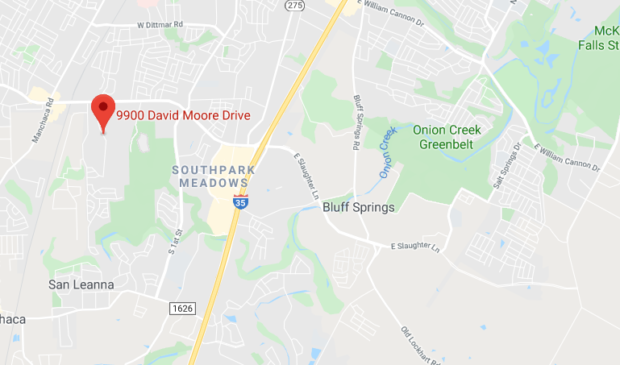Newsletter Signup
The Austin Monitor thanks its sponsors. Become one.
Most Popular Stories
- Austin opens new affordable housing development in Southeast Austin
- Landmark commission says goodbye to Nau’s Enfield Drug
- Congress Avenue transformation plan gets support from Urban Transportation Commission
- After a decline last year, Travis County homeowners should expect a return to rising property taxes
- Ethics complaints filed against Siegel, AURA
-
Discover News By District

ZAP locked in impasse over introducing a charter school in a South Austin neighborhood
Friday, November 22, 2019 by Jessi Devenyns
Faced with a neighborhood constrained by two exits and an uncertain increase in vehicle trips per day, the Zoning and Platting Commission debated how much density is too much for a South Austin neighborhood.
The 27-acre tract, which spans the addresses of 9900 David Moore Drive and 9800 Swansons Ranch Road, is owned by the Messinger family and currently zoned Interim-Rural Residence (I-RR). In order to develop the land with 120 condominiums and a charter school with a capacity of 1,500 students, Victoria Haase of Thrower Design came to the Zoning and Platting Commission on Nov. 19 to request a zoning change to Townhouse and Condominium Residence (SF-6) zoning.
Although city staff recommended the rezoning, dozens of neighbors came to the commission meeting to offer over an hour of testimony in opposition.
Tying all the testimony together was a common fear that the charter school will generate an unsupportable amount of traffic in a neighborhood with only two exits. The Messinger lot shares an entrance and exit route to main city streets with several hundred existing homes in the Texas Oaks neighborhood.
“Given the context that we’re constrained here, that’s what we’re worried about,” said neighbor and secretary of the Texas Oaks South Neighborhood Association Bill Meacham. “If there was a fire – which there have been – if there’s a flood – which there certainly have been – we’re stuck.”
The Austin Transportation Department conducted a neighborhood traffic analysis that showed the planned development will increase the number of daily vehicle trips by 4,005 vehicles. Seventy percent of the increase in trips is due to the proposed charter school. Increasing the traffic within the tract will also increase pressures on the two exits. On Bilbrook Place, there will be a 42.4 percent increase in traffic, which the neighborhood traffic analysis said will put the roadway at an “undesirable traffic level.” On David Moore Drive, there will be a 109.1 percent increase in daily traffic.
The percentage increases are based on data collected between Aug. 27 and Aug. 29, which neighbor Patricia Michael noted was during summer break for the University of Texas. She explained that this skews the data because many of the homes in the neighborhood are rented to university students who bring multiple cars per residence and greatly increase roadway congestion.
A spokesperson for the Transportation Department said, “according to UT’s calendar, classes started on Aug. 28, so two out of the three days of data collection would have picked up any student traffic.”
At the time of site plan, the applicant will be required to perform a traffic impact analysis to provide more detail on future traffic patterns as well as a proposal to mitigate traffic.
Commissioners and residents, however, worried that the current land use proposal might not be the final layout when a site plan is filed.
“There’s no cap on that 120-unit condos,” said Commissioner Ann Denkler. She noted that because the school is proposed, there is no guarantee that it will be built when all is said and done. If the school is not built and the property is zoned SF-6, then the applicant can increase the number of residences on the property. “So they could go up to 168 units rather than the 120,” Denkler said after running through the calculations in real time with city staff.
Other commissioners took issue with having a charter school in such close proximity to other AISD facilities and in such constrained circumstances. “Having 1,500 students coming into a neighborhood with limited access is a concern for me,” said Commissioner Ana Aguirre.
The proposed charter school is within several thousand feet of Paredes Middle School, Kocurek Elementary School and Casey Elementary School.
“The property needs to be rezoned to something,” said Commissioner Hank Smith. However, he warned the dozens of neighbors who came to oppose the rezoning case, “whatever it’s zoned to will bring on additional density.”
Despite the need for a permanent zoning, commissioners were unable to come to a consensus on whether high-density SF-6 zoning was appropriate. While there was a consensus that development was inevitable, concerns surrounding traffic and the potential hazards it presented to school children and residents continued to dog the votes.
After four failed votes, the commission was forced to settle on “no recommendation” to pass forward to Council. Commissioner Nadia Barrera-Ramirez was absent.
The Austin Monitor’s work is made possible by donations from the community. Though our reporting covers donors from time to time, we are careful to keep business and editorial efforts separate while maintaining transparency. A complete list of donors is available here, and our code of ethics is explained here.
You're a community leader
And we’re honored you look to us for serious, in-depth news. You know a strong community needs local and dedicated watchdog reporting. We’re here for you and that won’t change. Now will you take the powerful next step and support our nonprofit news organization?








